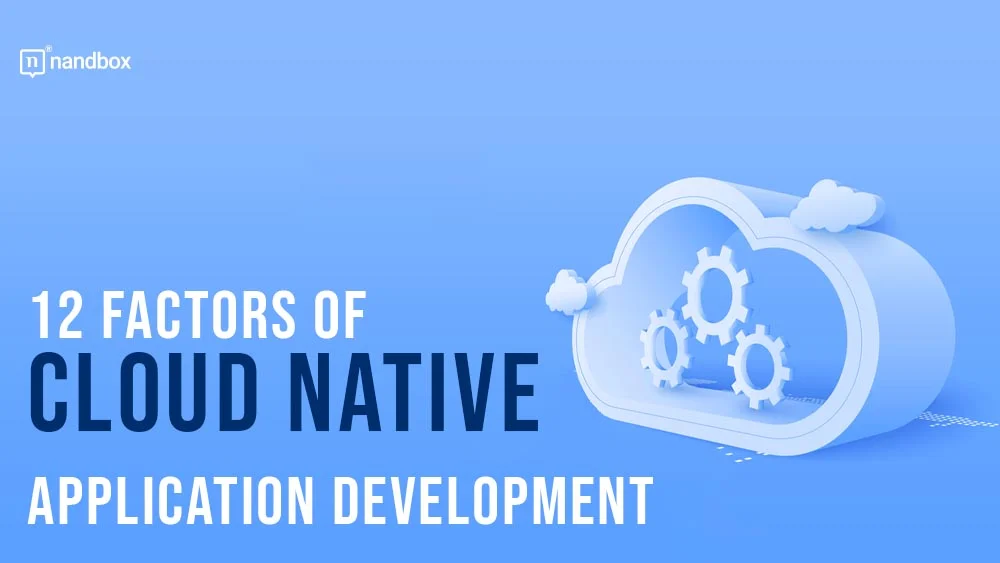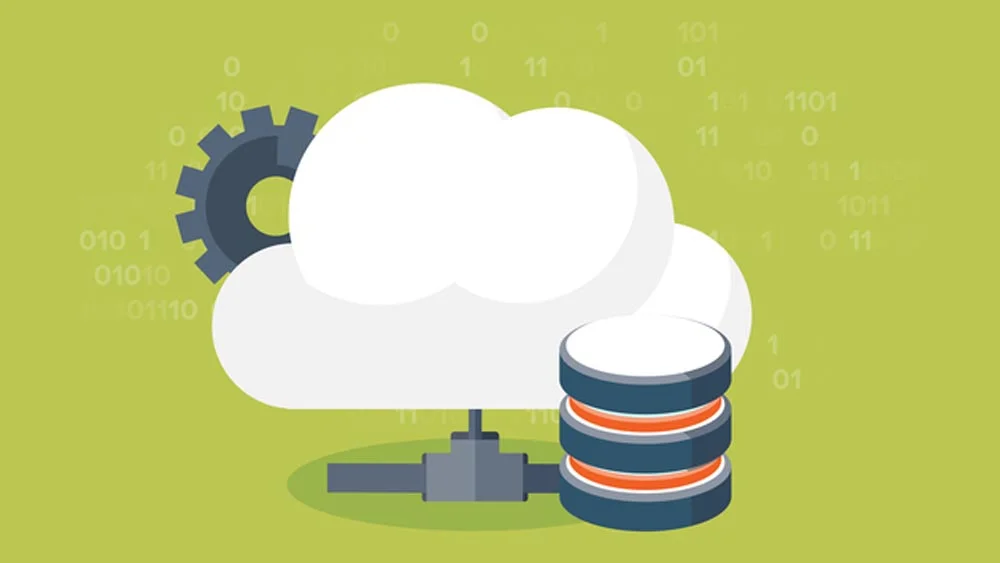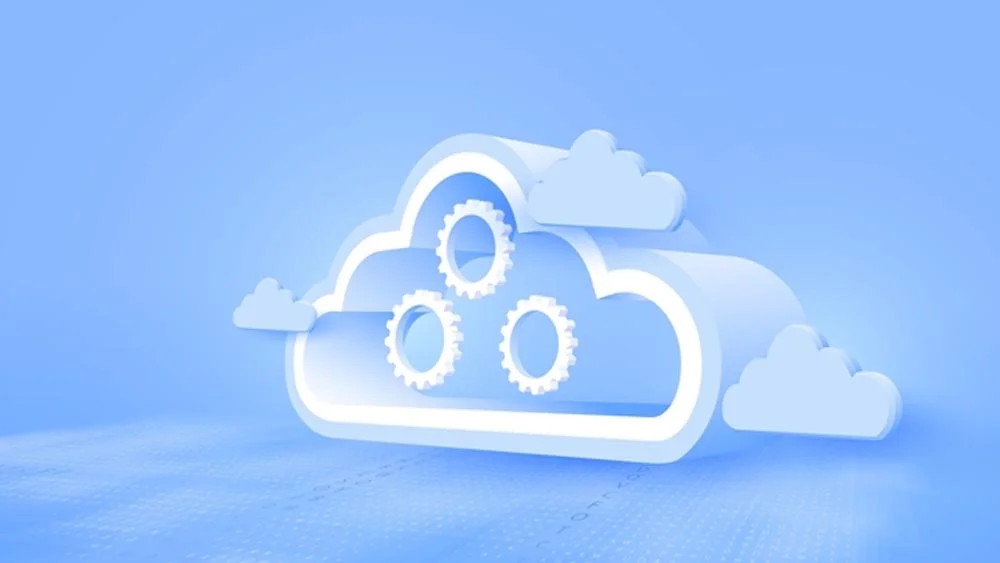The 12 Factors of Cloud Native Application Development Explained
The phrase “cloud native application development” refers to a modern methodology for creating and deploying software applications that aim to make the most of the features provided by a cloud computing environment. In this guide, we will discuss the 12 most important factors of cloud native application development that contribute to the success of application development. We will go into the core principles and practices that enable developers to design scalable, robust, and efficient applications for the cloud.
These will include topics such as containerization and the architecture of microservices. This guide will provide you with helpful insights and tactics to optimize the process of application development, regardless of whether you are new to cloud native programming or are trying to expand the abilities you already possess.
The 12 Factors of Cloud Native Application Development: What Is Cloud Native?
The software strategy known as “cloud native” refers to applications within cloud computing environments. apps that are extremely scalable, flexible, and resilient, as well as apps that modern businesses want to be able to update quickly to suit the needs of their customers.
In order to accomplish this, they make use of cutting-edge tools and procedures that fundamentally enable the creation of applications on cloud infrastructure. Adopters of these cloud-native technologies enjoy an inventive and competitive edge since these technologies allow for rapid and frequent changes to happen to applications without affecting the delivery of services.
Understand the Cloud-Native Architecture
Cloud-native architecture is a fundamental aspect of cloud-native application development. It involves designing applications that developers create to run on cloud platforms and take full advantage of their capabilities. This includes utilizing containerization technologies like Docker and Kubernetes, which allow for easy deployment and scaling of applications.
Additionally, cloud-native architecture emphasizes the use of microservices, which are small, independent components that work together to form a larger application. This modular approach enables developers to build applications that are more flexible, scalable, and resilient. By understanding the principles and components of cloud-native architecture, developers can effectively design and build applications and optimize them for a cloud environment.
Benefits of Cloud Native on App Development
There are several cloud-native benefits that you should take into consideration. Here is a list of pros that you should be aware of:
- Increases efficiency: Cloud-native software development is synonymous with the use of agile methodologies such as continuous delivery (CD) and DevOps. In order to construct scalable apps in a short amount of time, developers make use of automated technologies, cloud services, and contemporary design culture.
- Cost-Effective: Companies can avoid the high costs of purchasing and maintaining expensive physical infrastructure by embracing the cloud-native strategy. This allows businesses to save money. This will result in cost reductions over the long term for operational expenses. Building cloud-native solutions could potentially save money, which would be beneficial to your customers.
- Assures you accessibility: Companies may create durable and highly available apps using cloud-native technologies. Upgrades to features don’t disrupt service, and businesses can increase app resources during busy times to satisfy customers.
The 12 Factors of Cloud Native Application Development: What Are Cloud-Native Applications?
Applications that are native to the cloud are computer programs that developers build from a collection of microservices. Which are very small services that are interconnected with one another. Historically, software engineers have constructed monolithic apps using a single block structure that comprises all of the necessary features. Software developers take advantage of the cloud-native methodology in order to divide the capabilities into more manageable microservices. Because of this, cloud-native apps become more agile as a result of the fact that individual microservices operate independently and require just a minimal amount of computing resources to function.
The 12 Factors of Cloud Native Application Development
As we mentioned before, we will be discussing the 12 factors of cloud-native application development. In simple terms, here is a quick overview of each factor:
- Codebase: One codebase is monitored in revision control and has numerous deployments.
- Dependencies: Clearly identify and segregate dependencies
- Configuration: Keep the environment’s configuration.
- Backing Services: These services should be considered an attachment to resources.
- Build, release, and run: Clearly distinct build and run phases
- Processes: Execute the application using one or more stateless processes.
- Port-Binding: Exporting services through port binding
- Concurrency: Scaling-out concurrency using the process model
- Disposability: A fast start-up and smooth shutdown will maximize resilience when it comes to disposability.
- Dev/Prod Parity: Maintain as much balance between development and production as you can.
- Logs: Consider them to be event streams.
- Admin Processes: Run administrative and managerial activities as one-off procedures.
These are the 12 factors that form the cloud-native application process. One that we will talk about below in detail. We will be discussing practical ways of deploying these factors efficiently.
Codebase: A Quick Overview
Each application must have a distinct codebase (repos), according to the 12-factor app. There should not be numerous codebases for different versions. Please be aware that having branches is acceptable. In other words, there should only be one repository, not several, for all the deployment environments. It is against the 12-factor when multiple apps use the same code. You should select shared libraries in this case.
App deployment, as seen through the lens of a 12-factor app, refers to a functioning instance of an app, such as manufacturing, staging, QA, etc. Additionally, each developer has a deployable copy of the app running in their personal local development environment. Various versions may be active in multiple deployments (a version is similar to a code modification that is accessible in one environment but not another).
Dependencies: What Are They Exactly?
This factor suggests managing the dependencies outside of your codebase with the help of dependency management tools rather than adding the dependencies to your codebase.
You can consider Gradle to be a dependency manager from the standpoint of the Java programming language. In the build.gradle file, you will list all of the requirements, and then your application will get those dependencies from the Maven repository or many other repositories.
You furthermore need to take into consideration the connections from the point of view of the operating system and the execution environment.
Configuration: The Factor That “Varies”
Configuration is simply everything that differs between the various deployment environments. The following are certain examples for better understanding:
- Credentials and connections to databases, as well as endpoints for system integration
- Authentication details for third-party services and applications, such as Amazon S3 or Twitter, as well as for any other external programs
- Information that is unique to the application, such as its IP address, ports, hostnames, and so on.
Any configuration parameters that are hardcoded as variables in the codebase should be avoided. This clearly violates the guidelines for 12-factor apps. People use the environment variables to store configuration values, according to the 12 factors of cloud native application development concepts.
It promotes a clear division between configurations and code. No matter where the program is deployed, the code must remain the same. According to “config”, anything that changes depending on the environment must be relocated to configurations and controlled by environment variables.
Backing Services: The Network Consumer Factor
A supporting service is an application or service that an app uses via the network as part of its daily functioning, according to the 12 Factor App Principles. Any external systems with which the app connects, such as databases and message brokers, are considered backing services.
Without requiring any further code updates, a 12-factor app may automatically change the application’s supplier. Let’s imagine you want to switch from MySQL to Redshift as your database server. You shouldn’t modify your application’s code in order to accomplish this. A change in settings should be the only thing that can make it go away.
Build, Release, and Run: The Whole Process
The build, release, and run stages of the application must be completely distinct from one another. They play an important role as one of the most important factors in the 12 factors of cloud native application development. Let’s examine each stage in greater detail.
The “build” stage: Convert the source code into an executable bundle or build package.
The “release” stage: Integrate the build package from the build stage with the deployment environment’s configurations to complete your application’s readiness for use.
The “run” stage: This simulates operating your application in a real-world setting.
Processes: One of the 12 Factors of Cloud Native Application Development
The application is run as a process within the environment in which it is being executed. In order to fulfill the requirements of its users and customers, an application may employ one or more instances or processes.
According to the 12-factor principles, the application shouldn’t keep the data in memory; rather, it should save the data to a store first and then use the data from the store. When it comes to the state, your application should save the state in the database rather than in the memory of the process. This will ensure that the state is always accurate.
Stay away from utilizing sticky sessions; according to the 12-factor app principles, employing sticky sessions is a breach. If you would like to save the session information, you have the option of selecting Redis, Memcached, or any other cache supplier based on the parameters you have specified. If you follow these guidelines, your application will be highly scalable while having no negative effect on the system.
Port-Binding
The twelve-factor application is entirely self-contained and does not require the running time insertion of a server into the environment in which it is being executed in order to generate a web-facing service. By binding to a port and listening for requests that arrive on that port, the web app provides HTTP as a service to other websites. In a nutshell, this is all about enabling your application to run independently of any other web servers, rather than deploying it onto any of the other external web servers.
Concurrency
This relates to expanding the capabilities of the application. The twelve-factor app principles recommend that you give some thought to operating your application through a number of separate processes or instances rather than through a single, huge system. You still have the option to participate in threads, which will improve the simultaneous handling of requests.
Simply put, the twelve-factor app principles recommend horizontal scaling rather than vertical scaling as the optimal method of app expansion. (vertical scaling—the process of including more hardware in the system) Scaling in a horizontal direction involves adding more instances of the application.
Disposability: Increase the Robustness While Maintaining a Quick Startup and a Smooth Shutdown
The twelve-factor app’s procedures are disposable, which means that they can start or stop at any time. It is important that an instance’s actions do not affect the state of the application when it is starting up or shutting down. The ability to gracefully shut down is crucial. The system is responsible for ensuring that the state is right.
When fresh instances are introduced to the system or when old instances are taken down as required, the network should not be impacted in any way. This concept is also known as the disposability of systems. There are several possible causes for a system to become corrupted. It is the responsibility of the system to ensure that the impact will be limited and that the application will be saved in a valid state.
Dev/Prod Parity: Maintain as Much Balance Between Development and Production as You Can
The twelve-factor methodology recommends ensuring that there is as little of a gap as possible between the environment of development and the environment of output. This decreases the likelihood that certain bugs may manifest themselves in a given setting. The twelve-factor developer fights off the temptation to use various backing services for the production phase compared to the development phase.
Logs: We Call Them Event Streams!
When it comes to diagnosing problems with production or gaining knowledge of how users behave, logs become extremely important. You can observe the activity of a program while it is operating through the use of logs.
The twelve-factor app principles recommend keeping the generation of logs and the processing of the information in the logs separate. The execution environment is responsible for capturing, storing, curating, and archiving the app logs. Which people write as standard output from the application. The application’s execution environment should handle this stream’s management.
Admin Processes: Run Administrative and Managerial Activities as Stand-Alone Processes
As part of the application deployment, there are a number of one-off activities that you have to complete. Such as data migration and the running of one-off scripts in a particular environment. The Twelve-Factor Principles recommend including administrative chores like this one as part of the software codebase that is stored in the repository. If you do this, one-off scripts will then adhere to the process that is defined for your codebase.
Make sure that scripts that are only used once have automatic execution so that you do not have to worry about manually running them before publishing the build. In addition, the twelve-factor principles recommend making use of the integrated tools of the execution environment in order to execute those scripts on servers used for production.
Embracing Microservices: A Fundamental Contributing Factor
The utilization of microservices is one of the most important aspects of developing cloud-based applications native to the cloud. Microservices are discrete, self-contained subcomponents that, when combined with other microservices, constitute a larger application. Developers are able to construct programs that are more adaptable, scalable, and resilient when they split up an application into components that are more controllable and smaller.
you can build, launch, and scale each microservice individually. This enables developers to complete development cycles more quickly and makes maintenance more straightforward. Because of the modular design, teams are able to work on different aspects of the program simultaneously, which significantly boosts both their productivity and efficiency. When developing cloud-native apps, it is absolutely necessary to embrace microservices so that the applications may make full use of the scalability and flexibility offered by cloud platforms.
Final Thoughts on The 12 Factors of Cloud Native Application Development
Tired of all the technical terminology? I’ve got you! Sometimes technical work can get hard, or at least cause you a splitting migraine. In order to save yourself from that, you can simply strengthen your business by creating an app for it.
Our native no-code app builder nandbox will help you reach your aim. You can create seamless apps using our native no-code app builder and enjoy the process. It only depends on a simple drag-and-drop feature addition method that will help you have a hassle-free development process.
Sign up now and enjoy our 14-day free trial, which will allow you to familiarize yourself with our app builder. You get to discover our features, modules, and pre-made templates during this period of time and try them all out! Take your business to the next level and empower it with a professional native app with nandbox!








